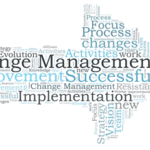Since the 2008 recession, most states are providing less funding support per student, leaving a shrinking pool of funds dedicated to student achievement improvements. School districts are under increased pressure to increase efficiency and manage costs while still prioritizing student academic outcomes.
Key Performance Indicators (KPIs) are an effective tool for measuring effectiveness in districts’ transportation, human resources and school maintenance departments. Districts can use KPIs to identify opportunities for increased efficiency, collect and benchmark data, and make informed decisions surrounding operations. However, setting unrealistic or off target KPIs can backfire, leaving districts with missed opportunities and increasingly inefficient procedures. To best implement KPIs, districts should consider the following six questions:
1. Do they align with strategic plan goals?
The strategic plan for a district should be the preliminary guide for setting all KPIs. KPIs are meant to measure how effectively the district is moving towards its key goals. By benchmarking these goal against the overall strategic plan, the KPIs promise to be relevant to the overall needs of the district. If a district’s strategic plan for human resources aims to improve overall retention of teachers, one KPI for that goal would be the percentage of effective and highly effective teachers retained by high/low-needs schools and by subject area. Tracking this percentage over time shows clear milestones in the district’s strategic efforts to improve the retention of quality teachers.
2. Have efficiency goals been identified?
Understanding what efficiency looks like in the district is important when benchmarking progress and reevaluating KPIs. It is futile to track KPIs across departments if there is not a comprehensive outline of what the most efficient version of those departments is. By setting these benchmarks, the KPIs the district chooses to measure will be rooted in a realistic vision for the department. For example, before setting a KPI for the average age of the school bus fleet, the district needs to have a concrete understanding of what the optimal age of the fleet is. Rather than setting an arbitrary number, the average age should reflect the age when the district most efficiently uses its funds on buses and when the buses are working most efficiently. If a transportation department’s optimal efficiency is reached when the bus fleet is 8 years old, the KPI should reflect that.
3. How easily can they be measured and analyzed?
Effective KPIs must be easily quantified, based on hard and accessible data. Setting a KPI based on an abstract concept can muddle the overall goal and make it difficult for department members to achieve. For example, an effective KPI for the transportation department in a K-12 district would be the number of accidents or number of miles between accidents. Instead of setting the vague goal to generally avoid getting in accidents, setting a finite number measures the effectiveness of drivers and can help administrators pinpoint weak points in the department. This number is easy to track over time and simple to measure as districts work to improve the metric.
4. Are the KPI goals clear and easy for stakeholders to understand?
To maximize the impact of KPI goals, stakeholders across the district must have a clear understanding of their purpose and overarching outcomes. Clarifying what the goals are and why they exist is an important first step when setting KPIs and encourages input from the employees and parents as the district works towards them. If a KPI set for the school maintenance department is the number of work orders completed, explaining how that metric is important to the success of the department is paramount. By proving to the department that tracking this number can improve efficiency and
minimize costs, department members can have a better understanding of what they are trying to achieve.
5. Will they show sufficient change over time to be valuable benchmarks for success?
Some KPIs can meet all the necessary criteria, but if they fail to show enough change over time they will not serve as helpful milestones for achieving the overall goals of the district. This is especially relevant for districts where some KPIs can be very effective for one school and ineffective at another school. For example, HR departments in some schools in a district might find that they can easily meet goals to decrease the total days required to interview a candidate. However, in specialized settings like alternative schools or special education departments, decreasing this number may be more difficult because of the time required to interview and screen candidates. It can be ineffective to expect HR departments to shorten this process when more time and care are necessary to place the right candidate in the open positions. As a result, it’s likely these HR departments would not show sufficient change, instead faltering behind other HR departments across the district. To avoid this, districts should set specific KPIs tailored for the school’s needs and capabilities.
6. Are they consistent with previous indicators?
Benchmarking new KPIs against previous indicators is an important step to ensuring the new KPIs are in line with previous efforts and align with the overall strategy of the district. KPIs are most effective when they build off past progress. For example, if a district has always used the number or percentage of vacancies filled by the start of the school year as a measure of the effectiveness of the recruiting process and HR department, it could be counterproductive to adjust the KPI to reflect the percentage of new teachers with effective or higher ratings. While this metric is helpful to improving the effectiveness of the department, there are challenges to changing the overall evaluating process. If new indicators of progress do not echo former ones, it can be difficult to get buy in from the department and could potentially stilt progress. Instead, rooting KPI goals in the previous expectations of the department can better increase efficiency.
source: hanover research






